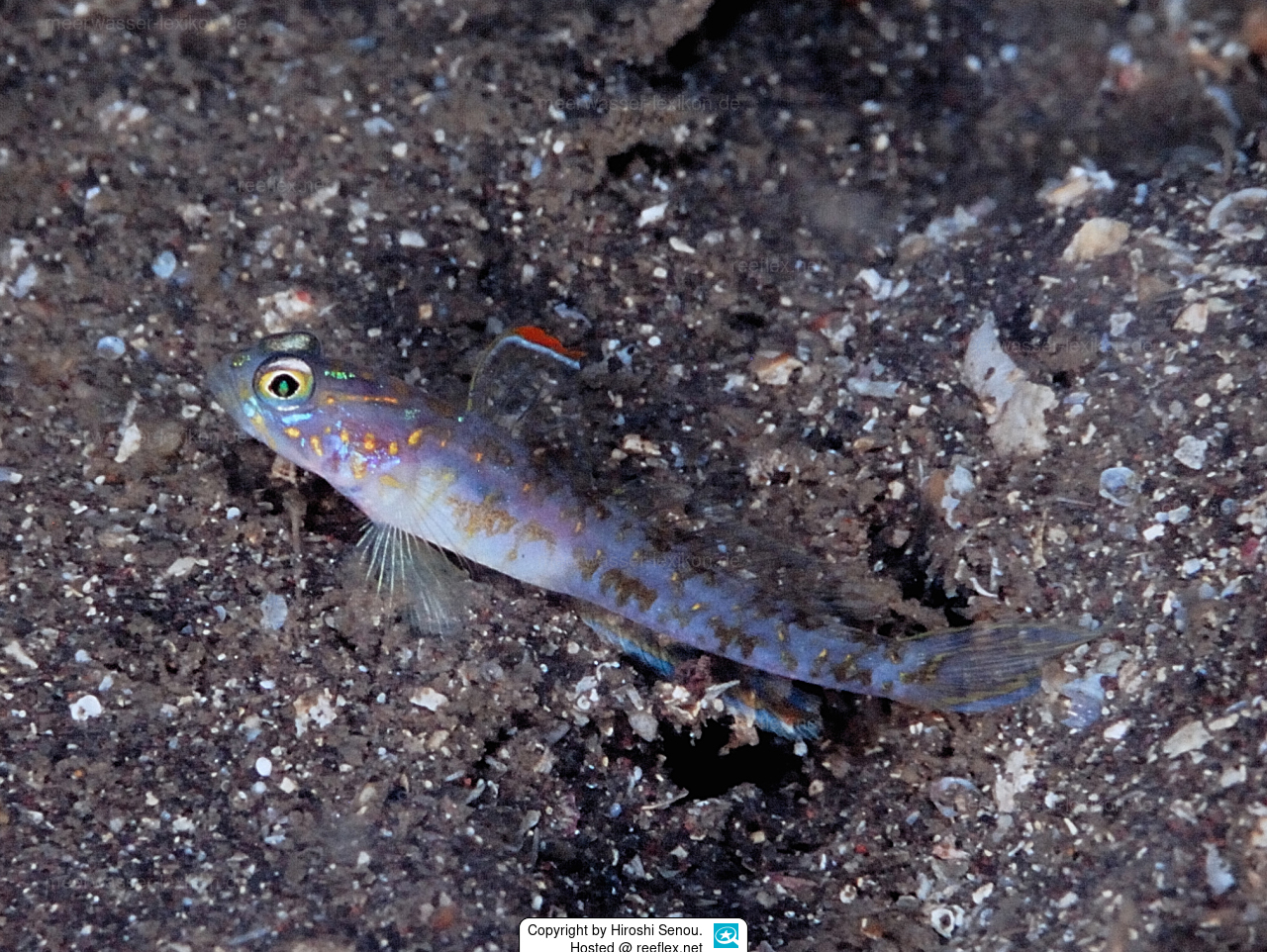Info
We would like to express our sincere thanks to Dr. Hiroshi Senou, Kanagawa Prefectural Museum of Natural History, who provided the first photo of Vanderhorstia puncticeps to reeflex.net.
Vanderhorstia puncticeps was found on the one hand off the Pacific temperate coast of Japan, in a depth range of 60 -123 meters, and on the other hand
type specimens of Ctenogobius puncticeps (Vanderhorstia puncticeps) were found in the East China Sea, off Wenzhou, Zheijiang Province, China.
In some publications there is a (false) indication that Vanderhorstia puncticeps is endemic to Chinese waters.
Vanderhorstia puncticeps is distinguished from its relatives by the following combination of characteristics:
11-12 (usually 11) segmented rays on second dorsal fin;
anterior 3 spines of first dorsal fin often elongate and filiform, extending posteriorly to base of first, second, or third segmental ray of second
dorsal fin;
Connecting membrane between most rays well developed; irregularly shaped, yellow
markings on cheek and operculum; oblique narrow oblique yellow line from posterior end of eye to nape;
small bright yellowish red spot in middle of operculum;
About 9 narrow yellow vertical stripes on body;
distal tip of first dorsal fin bright red;
narrow yellow longitudinal band on middle of anal fin.
Synonym: Ctenogobius puncticeps Deng & Xiong, 1980
Jumping guard
A jumping guard prevents (nocturnal) fish from jumping out.
Wrasses, blennies, hawkfishs and gobies jump out of an unprotected tank in fright if their night rest is disturbed, unfortunately these jumpers are found dried up in the morning on carpets, glass edges or later behind the tank.
https://www.korallenriff.de/en/article/1925_5_Jump_Protection_Solutions_for_Fish_in_the_Aquarium__5_Net_Covers.html
A small night light also helps, as it provides the fish with a means of orientation in the dark!
Vanderhorstia puncticeps was found on the one hand off the Pacific temperate coast of Japan, in a depth range of 60 -123 meters, and on the other hand
type specimens of Ctenogobius puncticeps (Vanderhorstia puncticeps) were found in the East China Sea, off Wenzhou, Zheijiang Province, China.
In some publications there is a (false) indication that Vanderhorstia puncticeps is endemic to Chinese waters.
Vanderhorstia puncticeps is distinguished from its relatives by the following combination of characteristics:
11-12 (usually 11) segmented rays on second dorsal fin;
anterior 3 spines of first dorsal fin often elongate and filiform, extending posteriorly to base of first, second, or third segmental ray of second
dorsal fin;
Connecting membrane between most rays well developed; irregularly shaped, yellow
markings on cheek and operculum; oblique narrow oblique yellow line from posterior end of eye to nape;
small bright yellowish red spot in middle of operculum;
About 9 narrow yellow vertical stripes on body;
distal tip of first dorsal fin bright red;
narrow yellow longitudinal band on middle of anal fin.
Synonym: Ctenogobius puncticeps Deng & Xiong, 1980
Jumping guard
A jumping guard prevents (nocturnal) fish from jumping out.
Wrasses, blennies, hawkfishs and gobies jump out of an unprotected tank in fright if their night rest is disturbed, unfortunately these jumpers are found dried up in the morning on carpets, glass edges or later behind the tank.
https://www.korallenriff.de/en/article/1925_5_Jump_Protection_Solutions_for_Fish_in_the_Aquarium__5_Net_Covers.html
A small night light also helps, as it provides the fish with a means of orientation in the dark!







 Dr. Hiroshi Senou, Japan
Dr. Hiroshi Senou, Japan



























